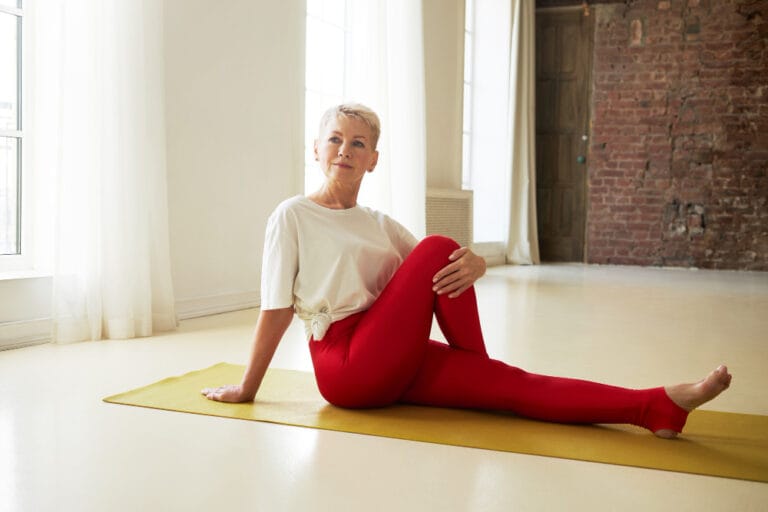FREE SHIPPING OVER $50
Live Longer, Ditch the Treadmill? Science Reveals the True Longevity Exercise (It’s Not Cardio!)
For years, when we thought about living a long, healthy life, our minds often jumped straight to cardio. Running, jogging, cycling, swimming – these were the go-to activities championed for their ability to strengthen your heart and help you live longer. And don’t get us wrong, cardio is fantastic for your well-being!
But what if science is now telling us that there’s another, often overlooked, form of exercise that holds even more power for longevity? What if the true longevity exercise isn’t primarily about pounding the pavement or clocking miles on the treadmill? Groundbreaking research, including extensive studies spanning over a decade, is suggesting something truly revelatory: while cardio definitely has its place, the ultimate key to adding healthy years to your life might lie elsewhere.

The Cardio Conundrum: Why We Love It (But It’s Not the Whole Story)
Let’s be clear: cardio, or aerobic exercise, offers a wealth of indisputable health benefits. It strengthens your cardiovascular system, lowers blood pressure, improves cholesterol levels, helps with weight management, and boosts mood. For these reasons alone, it’s a vital part of any fitness routine. We’ve been told for decades that a strong heart equals a long life, and that’s largely true.
However, when researchers started digging into what specifically contributes to exceptional longevity and healthspan (the number of years lived in good health), they noticed something intriguing. While consistent aerobic exercise certainly extends life, there was another piece of the puzzle that seemed even more impactful, especially as people aged. The focus began to shift from purely cardiovascular endurance to another critical aspect of physical fitness.
This pivotal discovery has been highlighted by various studies. The findings were quite clear, challenging the long-held belief that cardio was the supreme longevity exercise.
The Big Reveal: The True Longevity Exercise Is… Strength Training!
Yes, you read that right. According to a study, the true longevity exercise that powerfully contributes to a longer, healthier life is strength training, also known as resistance training.
This isn’t about becoming a bodybuilder. It’s about preserving and building muscle mass, and maintaining functional strength as you age. The research reveals that individuals who regularly engage in strength training tend to have significantly lower mortality rates from all causes, particularly as they move into their later years.
Why is strength training the true longevity exercise
- Combating Sarcopenia: As we age, we naturally start to lose muscle mass, a condition known as sarcopenia. This isn’t just about looking less toned; it severely impacts metabolism, mobility, balance, and overall strength. Research consistently shows that maintaining muscle mass through resistance training is directly linked to increased longevity and a reduced risk of early death. More muscle means your body functions better for longer.
- Fortifying Bones: Strength training puts healthy stress on your bones, stimulating them to become denser and stronger. This is crucial for preventing osteoporosis, a condition that makes bones brittle and prone to fractures. Avoiding hip fractures, for example, is a major factor in maintaining independence and longevity in older age.
- Optimizing Metabolic Health: Muscle is metabolically active tissue. The more muscle you have, the better your body becomes at managing blood sugar and insulin sensitivity. This directly helps in preventing or managing type 2 diabetes, a major chronic disease that significantly impacts longevity and quality of life.
- Enhancing Balance and Mobility: Strong muscles, particularly in the core and lower body, are fundamental for maintaining balance and coordination. This drastically reduces the risk of falls, which are a leading cause of injury, disability, and even death in older adults. Strength training directly improves functional fitness, allowing you to move with greater ease and confidence throughout your life.
- Reducing Chronic Inflammation: Chronic low-grade inflammation is a silent killer, contributing to numerous age-related diseases. Strength training has been shown to reduce markers of systemic inflammation, potentially mitigating the risk of various chronic conditions, including heart disease and some cancers.
- Boosting Cognitive Function: Emerging research suggests a strong link between strength training and improved cognitive function, including memory and executive function. The exact mechanisms are still being explored, but it may involve increased blood flow to the brain and beneficial hormonal responses.
- Improving Quality of Life and Independence: Beyond simply living longer, strength training significantly impacts your “healthspan.” It allows you to maintain your independence, enjoy hobbies, travel, and perform daily tasks without relying on others. This active lifestyle is intrinsically linked to greater life satisfaction and well-being in later years.
Ditch the Treadmill? Not Entirely! The Power of a Balanced Approach
Now, does this mean you should completely ditch the treadmill and throw out your running shoes? Absolutely not! The message from science isn’t to replace cardio but to ensure strength training gets the recognition and prioritization it deserves for longevity.
A truly effective longevity exercise strategy integrates both:
- Cardio for Cardiovascular Health: Continue with your brisk walks, runs, swims, or cycles to keep your heart strong and healthy. This directly impacts your lifespan by reducing the risk of heart disease.
- Strength Training for Functional Longevity: Add regular resistance training to preserve muscle, strengthen bones, improve metabolism, and maintain the physical independence that allows you to enjoy those extra years.
Think of it as building a strong house. Cardio keeps the plumbing and electrical systems running smoothly, while strength training builds the sturdy foundation, walls, and roof. You need both for a durable, long-lasting structure. The combined effect is far more powerful for longevity than either alone.
Getting Started: How to Incorporate Strength Training for Longevity
Here’s how to start integrating strength training into your routine, even if you’re a beginner:
- Frequency: Aim for 2-3 strength training sessions per week, allowing a day of rest between sessions for muscle recovery.
- Focus on Compound Movements: These exercises work multiple muscle groups at once, making your workouts efficient and highly effective. Think squats, lunges, push-ups, rows, and overhead presses.
- Use Progressive Overload: To keep building strength and muscle, you need to gradually increase the challenge. This could mean lifting heavier weights, doing more repetitions, adding more sets, or decreasing rest time between sets.
- Master Proper Form: This is paramount for preventing injuries and ensuring you’re effectively targeting the right muscles. If you’re new to strength training, consider working with a certified personal trainer, even for just a few sessions, to learn correct technique.
- It Doesn’t Require a Gym: You can perform effective strength training using just your body weight (squats, push-ups, planks), resistance bands, or simple free weights at home.
Consistency is key. Like any powerful habit for longevity, the benefits accumulate over time.
Final Thoughts
The science reveals a powerful truth: while cardio keeps your heart pumping strong, strength training is the true longevity exercise that actively helps you maintain muscle, bone, metabolism, and functional independence for years, even decades, longer. It’s about building a robust foundation that supports your entire body as you age.
So, don’t feel the need to ditch the treadmill entirely, but certainly reconsider its starring role in your longevity plan. Embrace resistance training as your new best friend for anti-aging. By prioritizing both cardio and strength training, you’re not just aiming to live longer; you’re building a vibrant, resilient body that allows you to fully enjoy every single one of those added years.
Related Articles
- Researchers Uncover the #1 Strength Training Method for Older Adults to Build Muscle & Boost Energy!
- Knee Pain? NOT Anymore! 15 Gentle Workouts That Torch Calories & Protect Your Joints
- Age Reversal Workout: This “Slow-Mo” Method Builds Strength & Fights Muscle Loss (Even at 70+!)
- 75 and FIERCE: Her Yoga Secret That SHAVED Decades Off Her Body in 30 Days! (See the Shocking Before & After)
- Future-Proof Your Brain: The “Anti-Aging” Exercise Routine Doctors Recommend to STOP Dementia & Memory Loss







